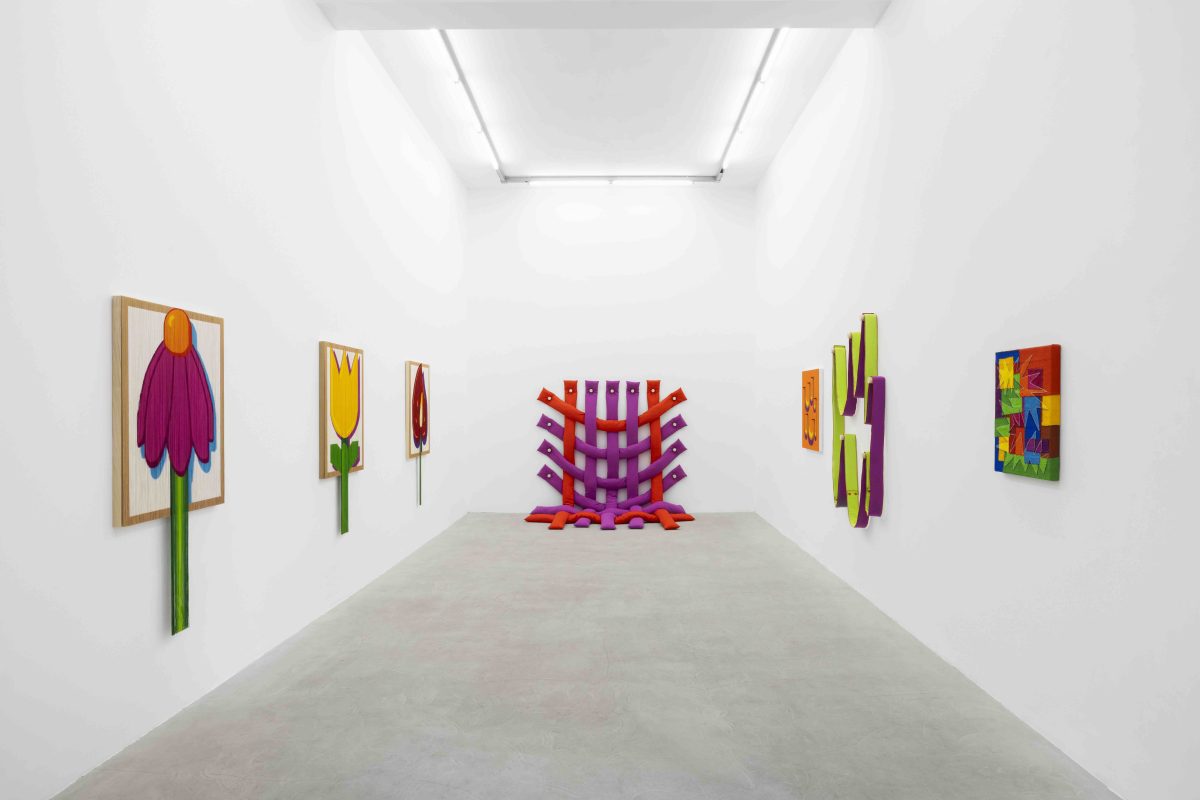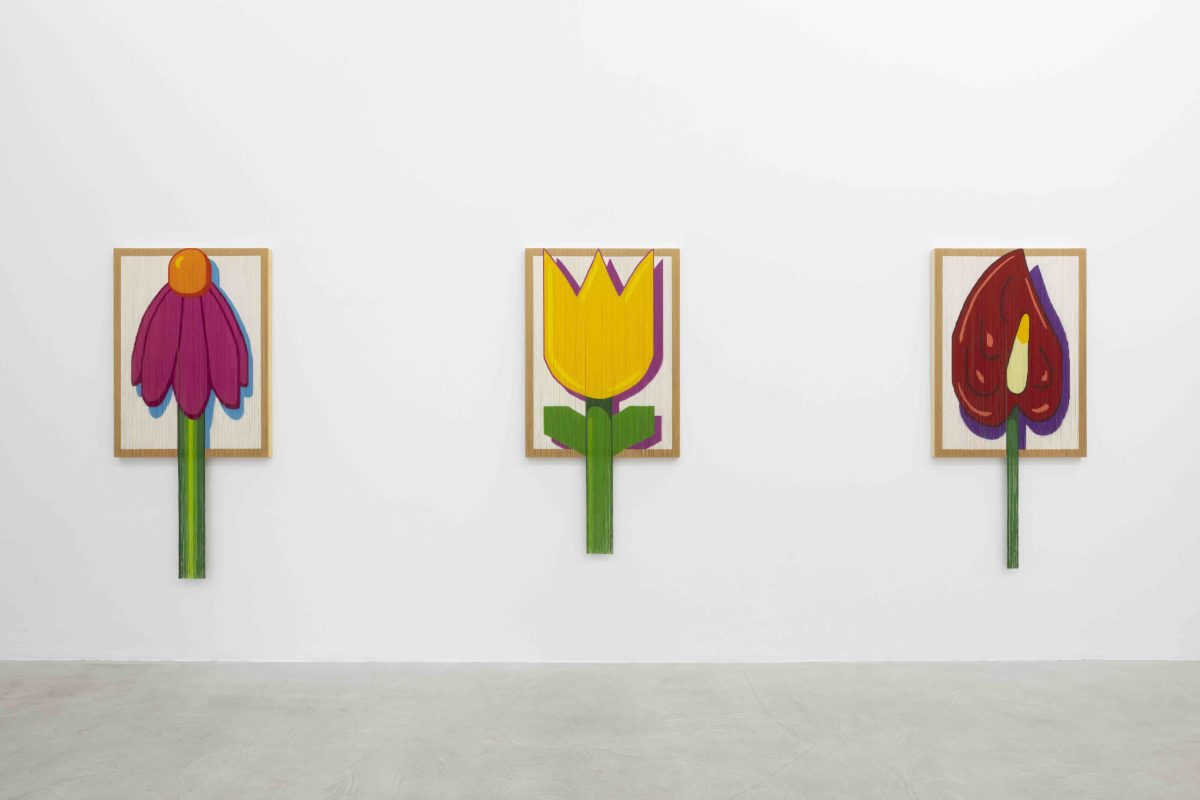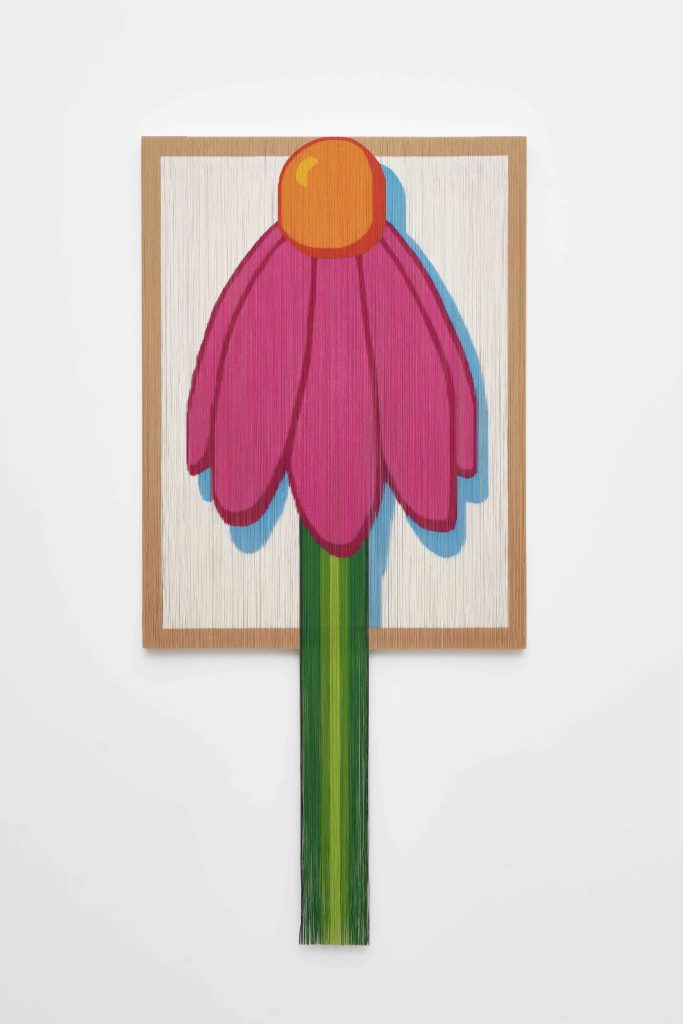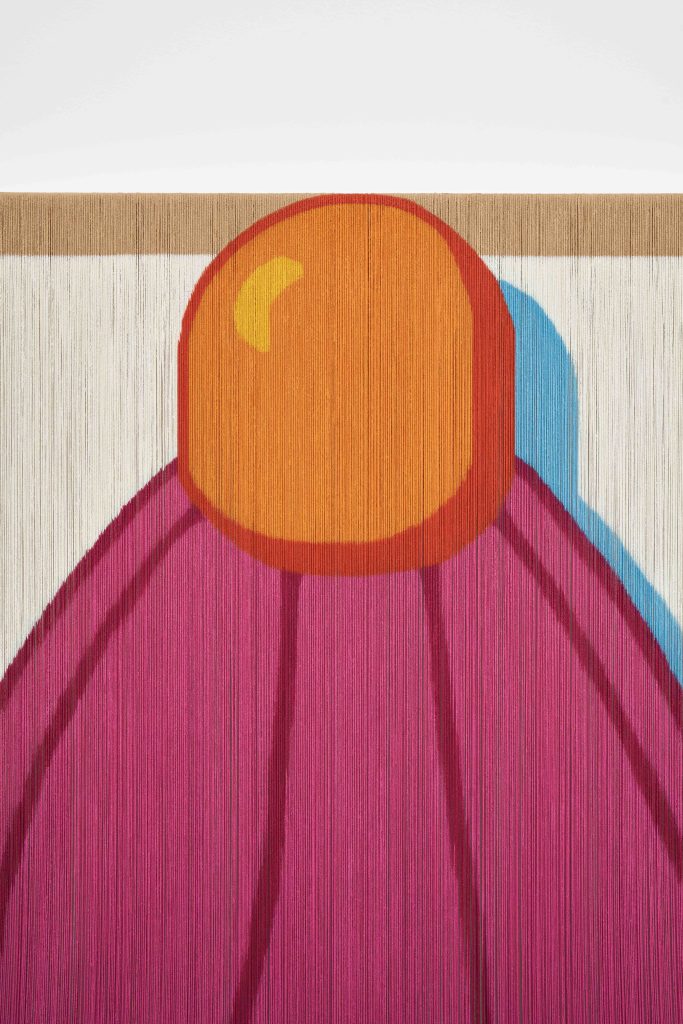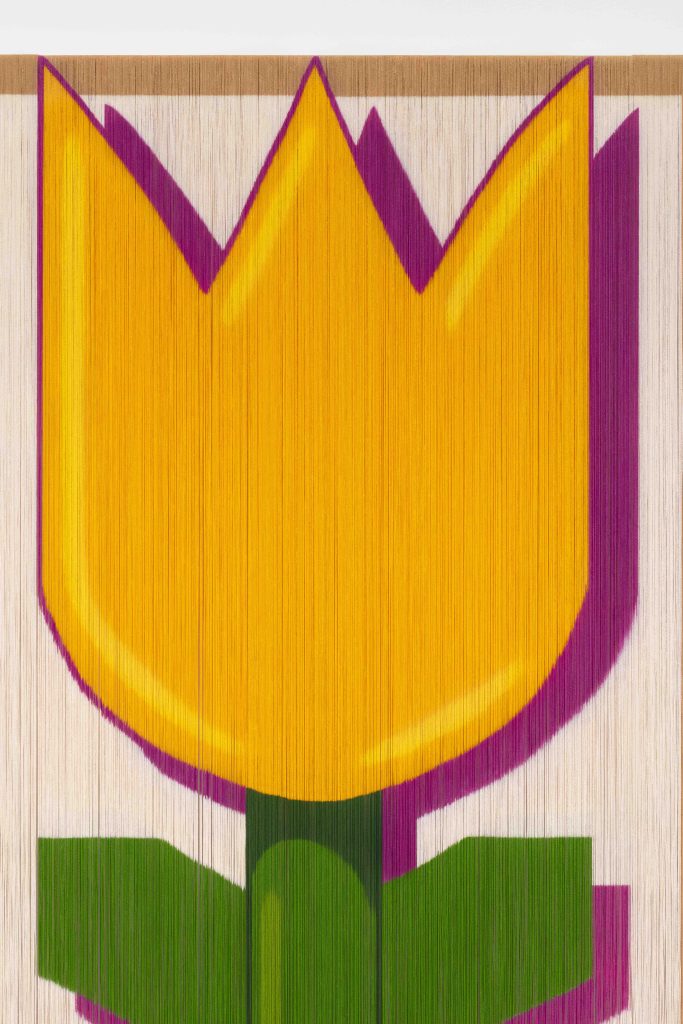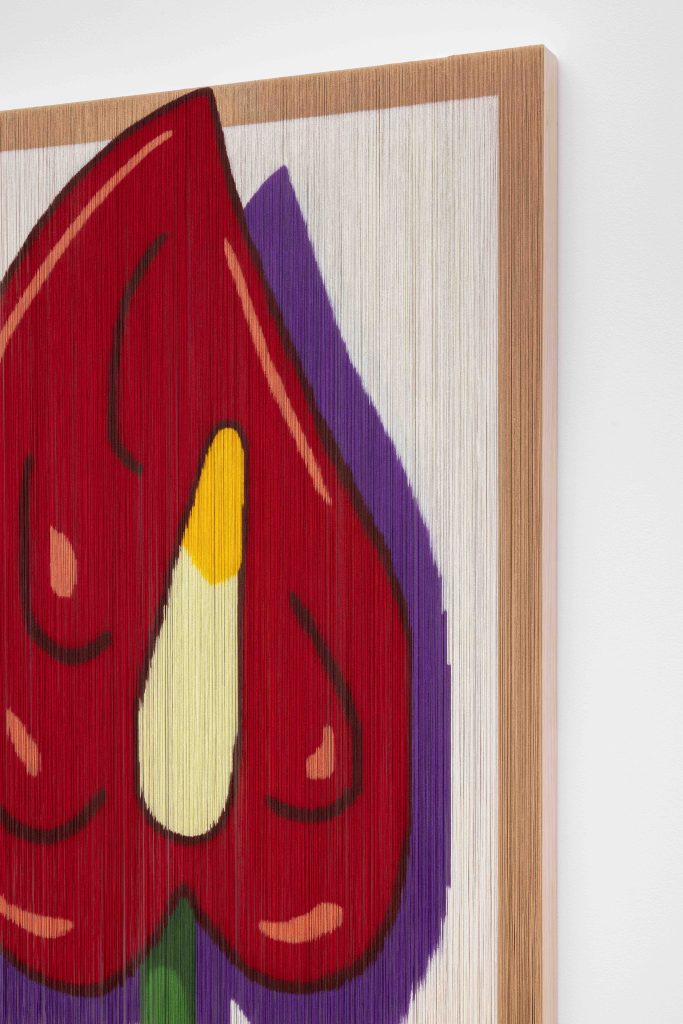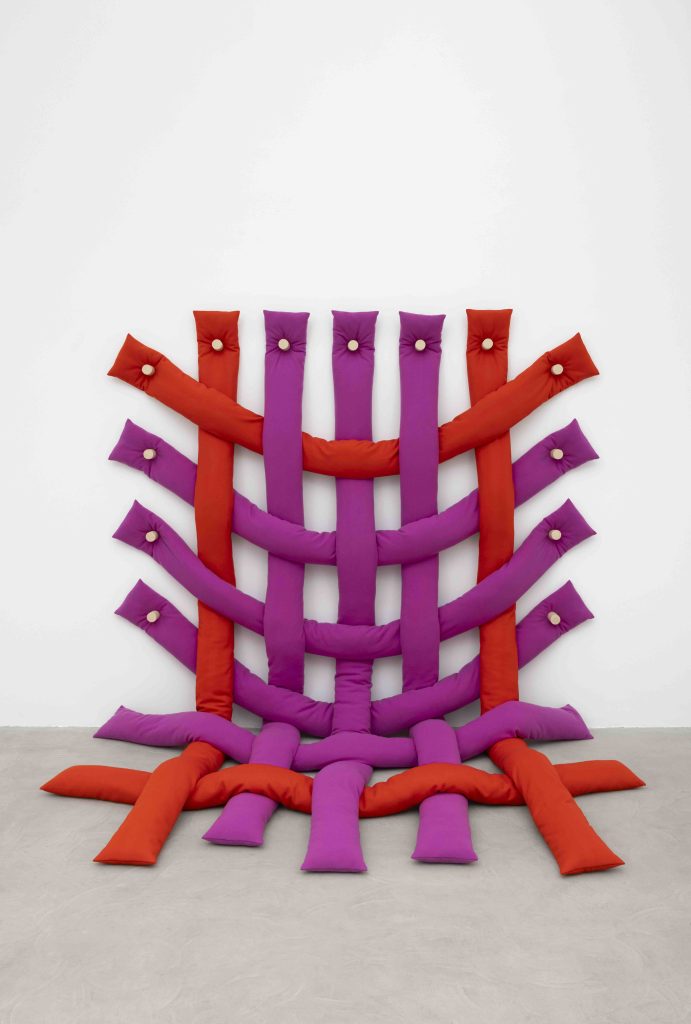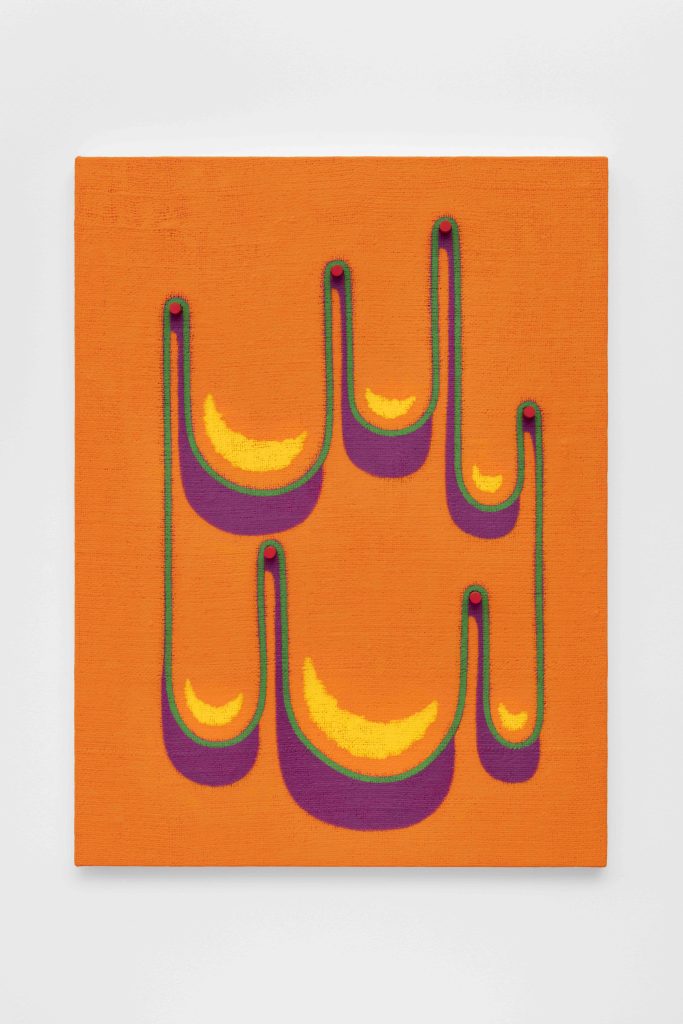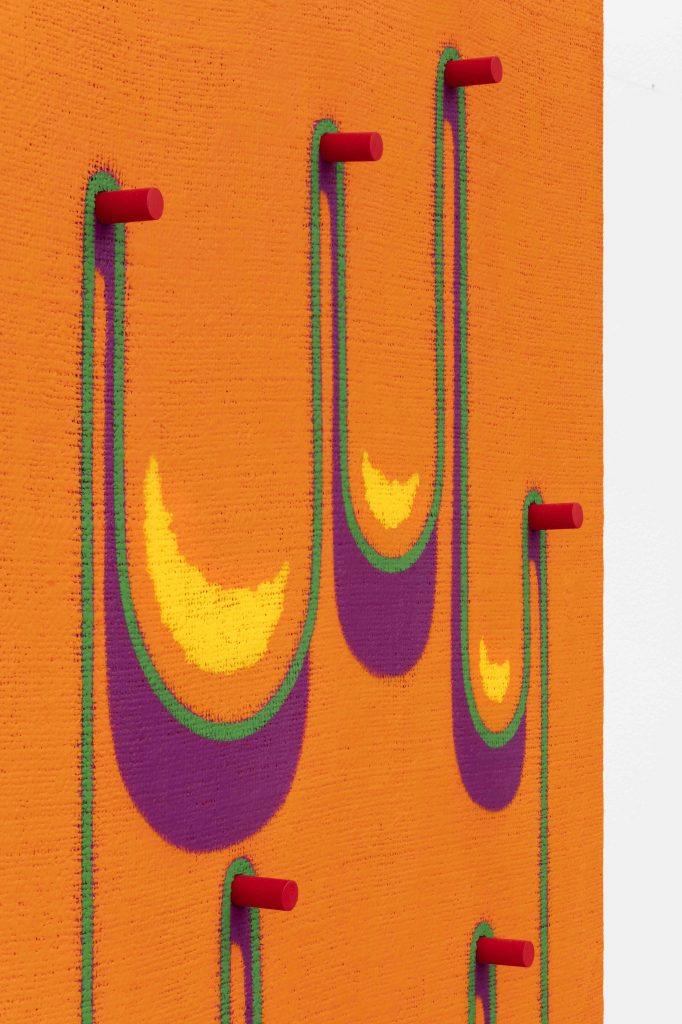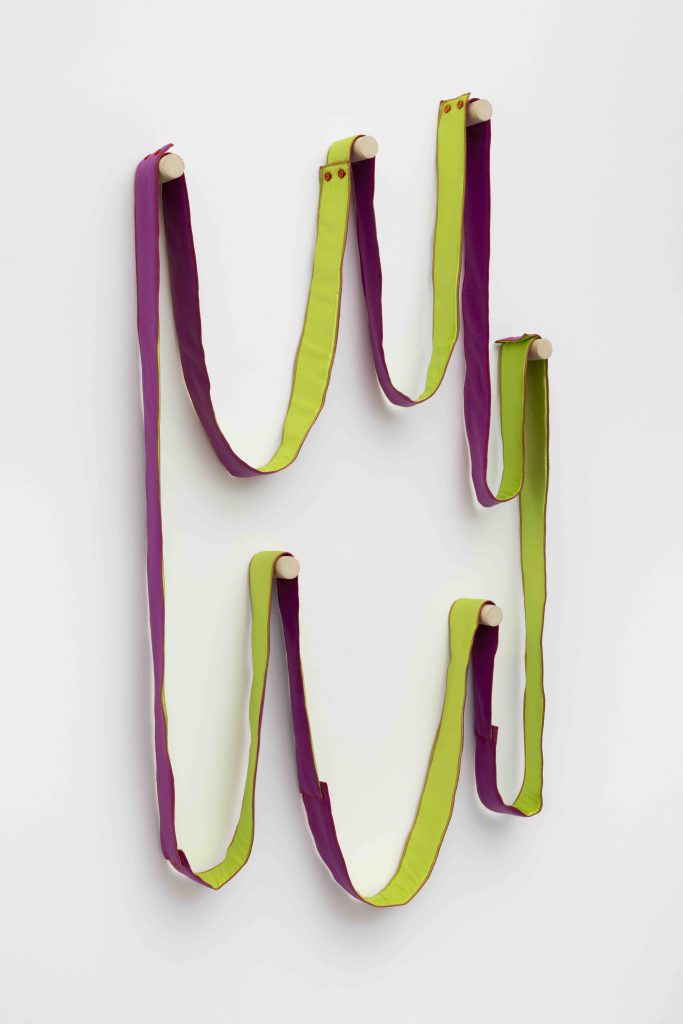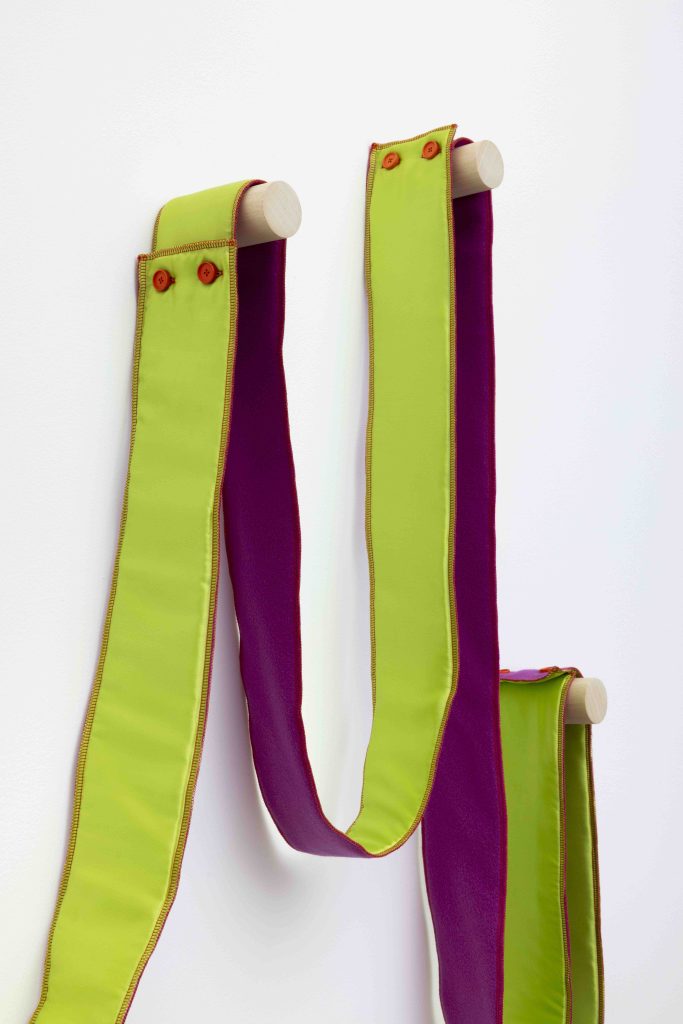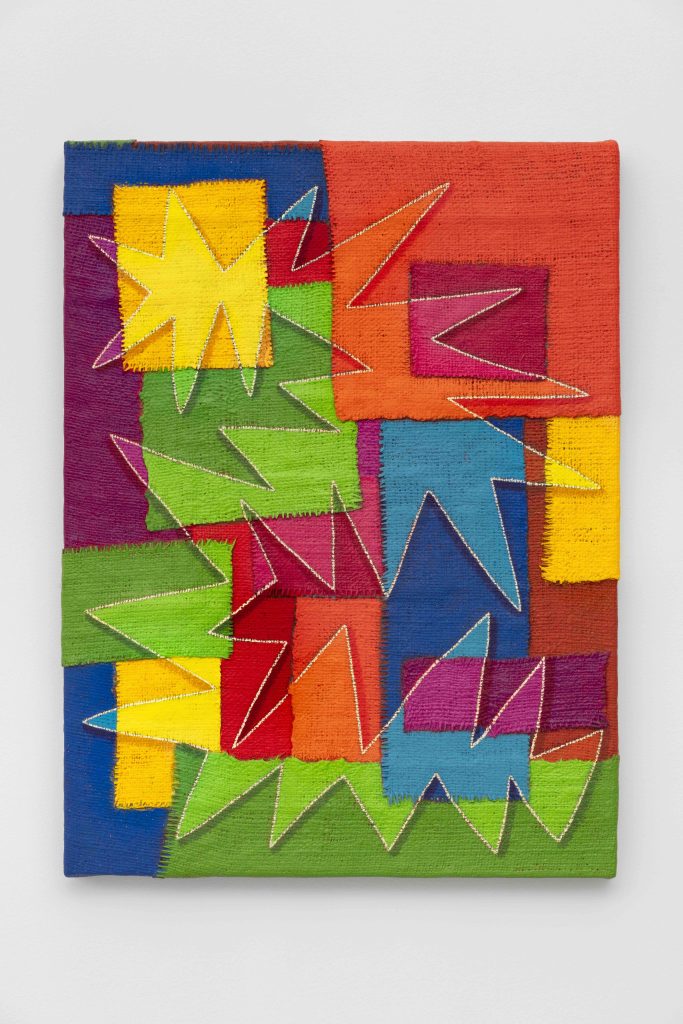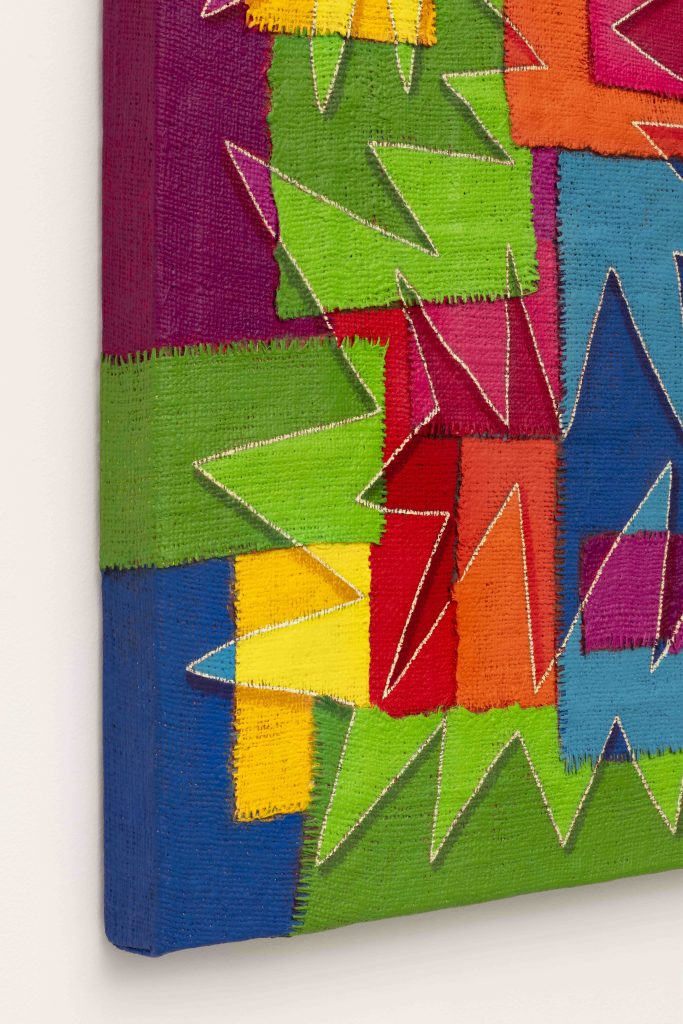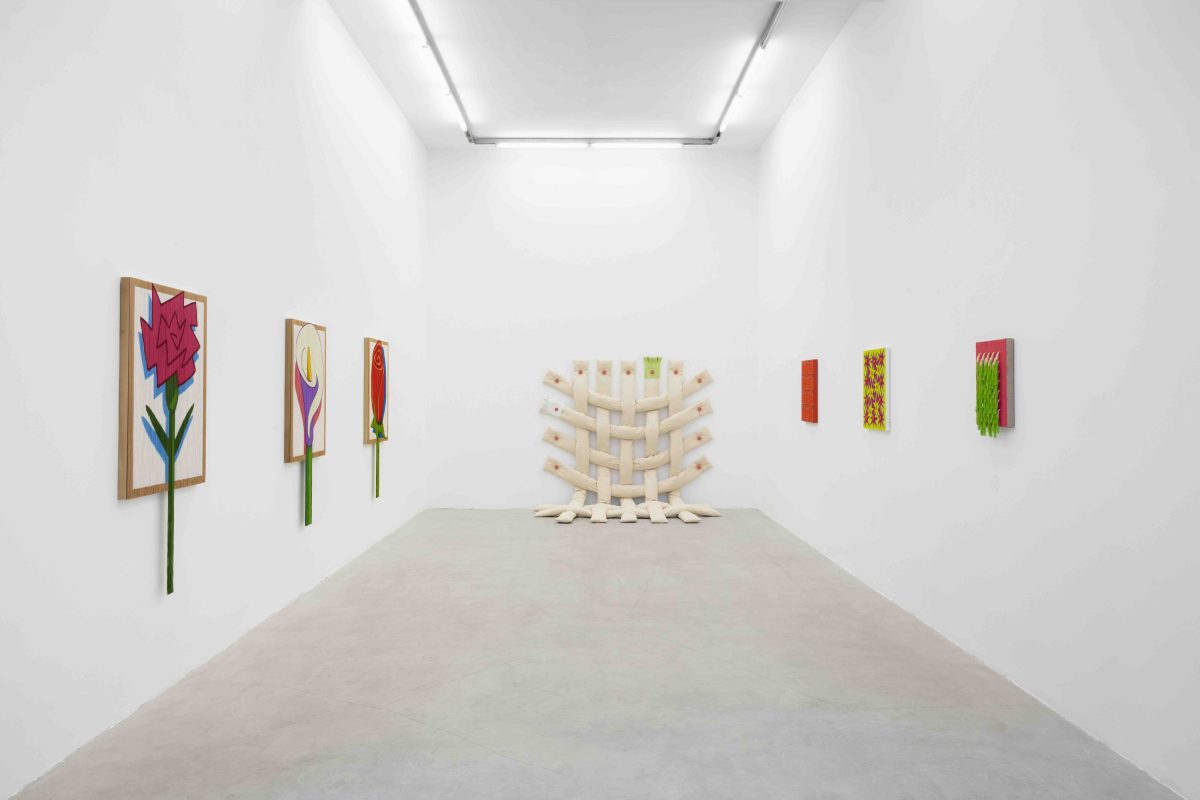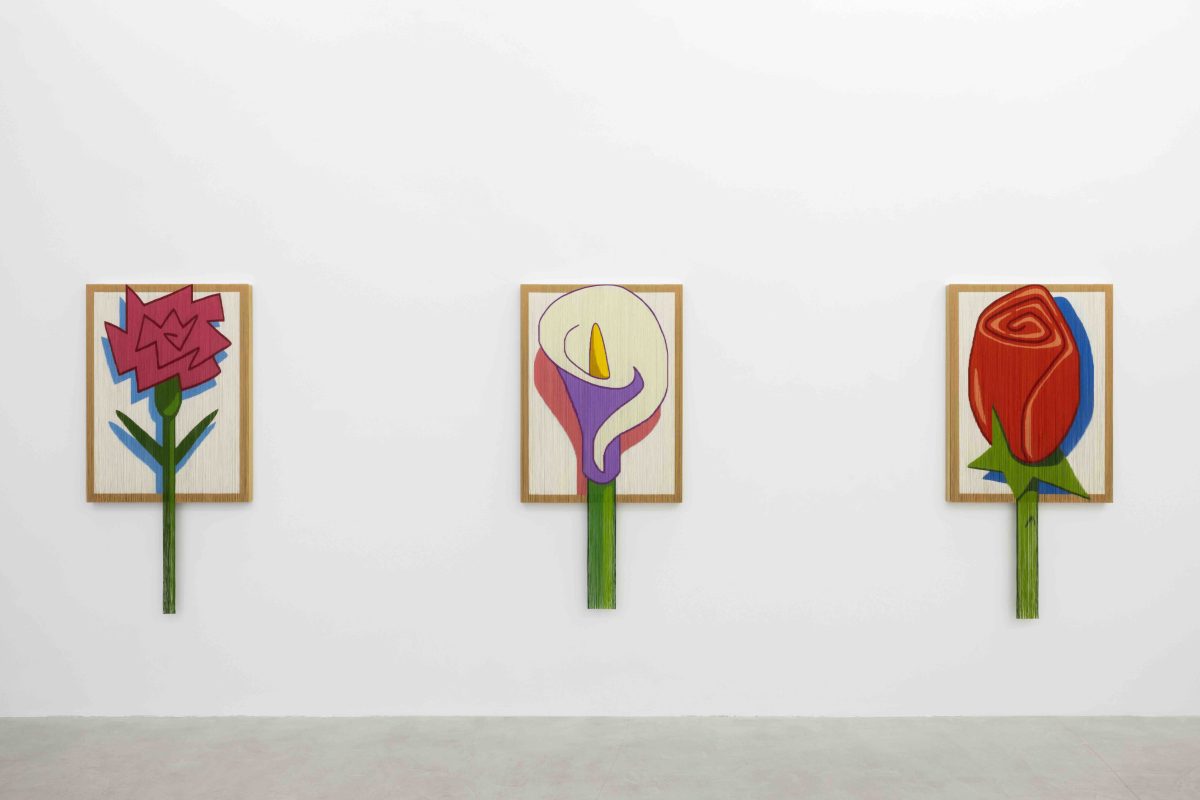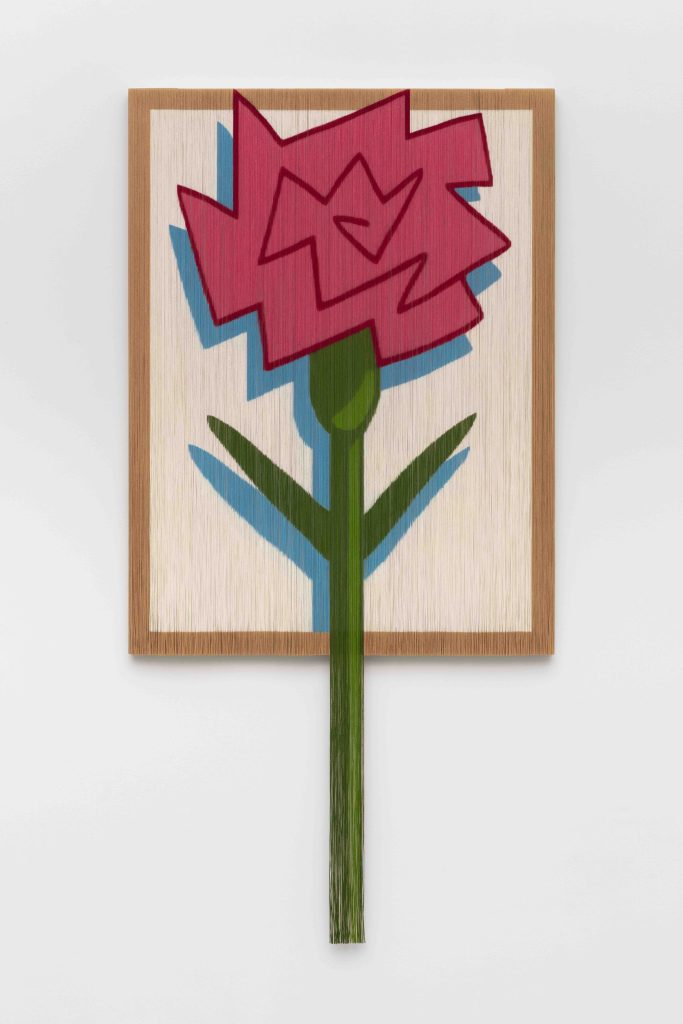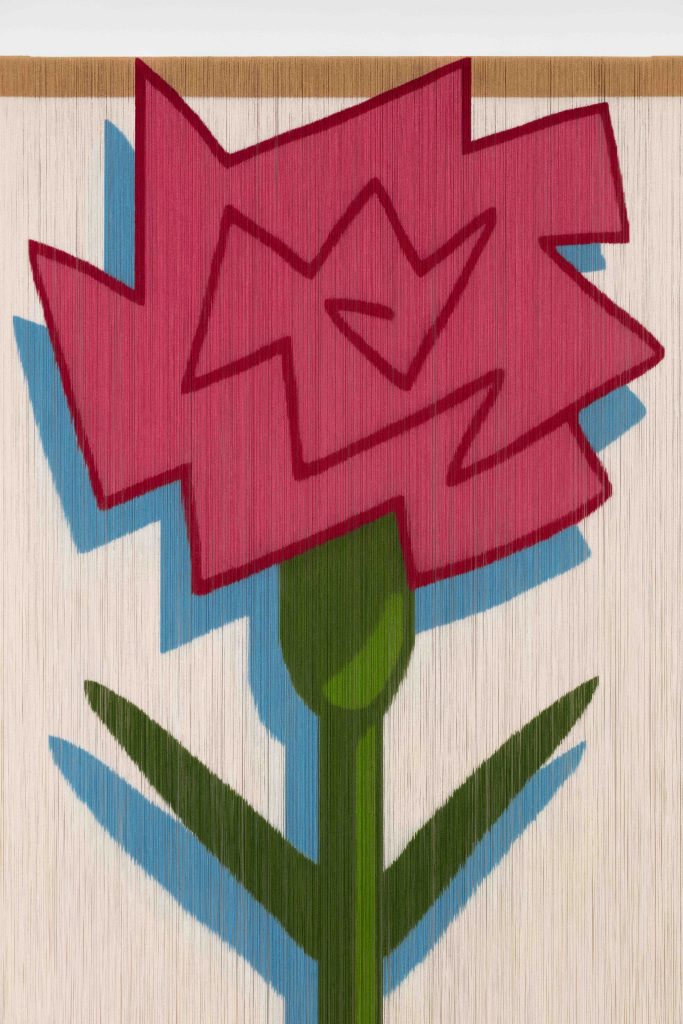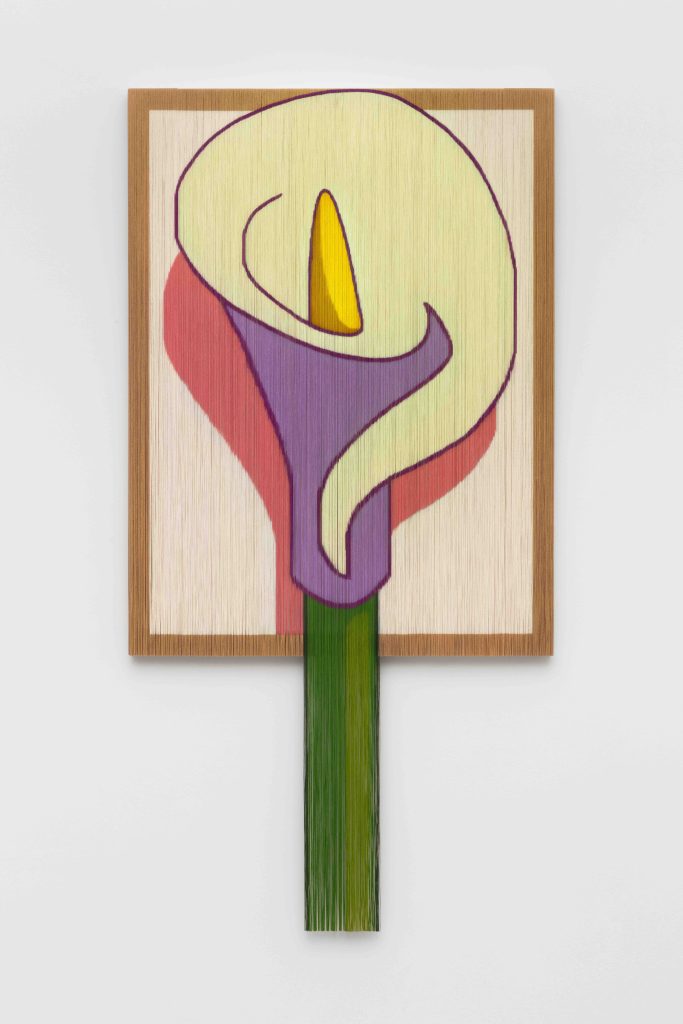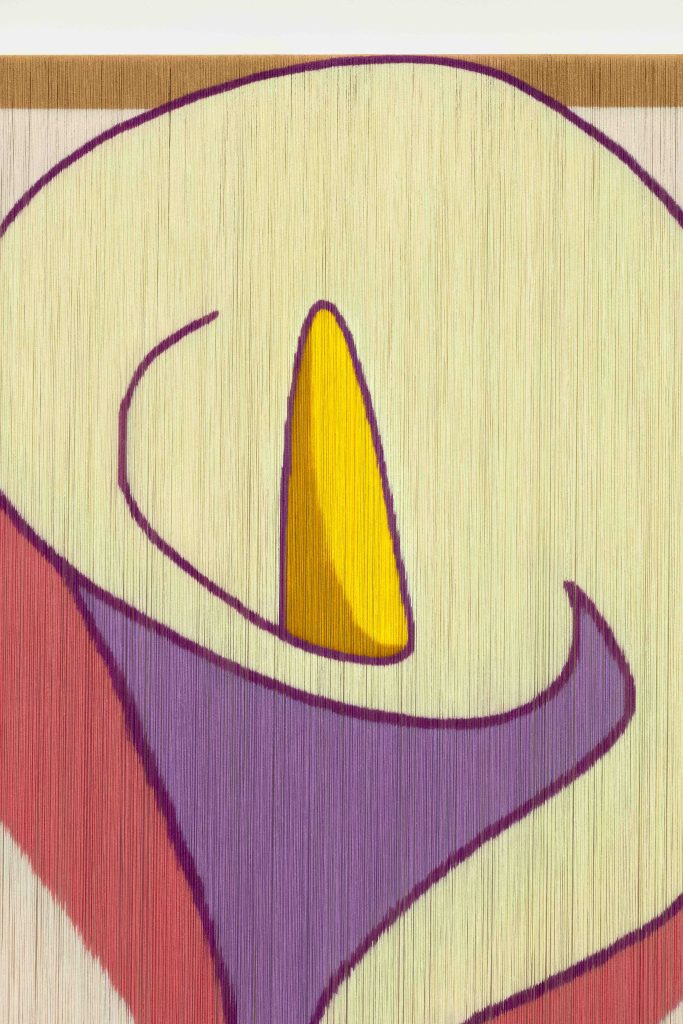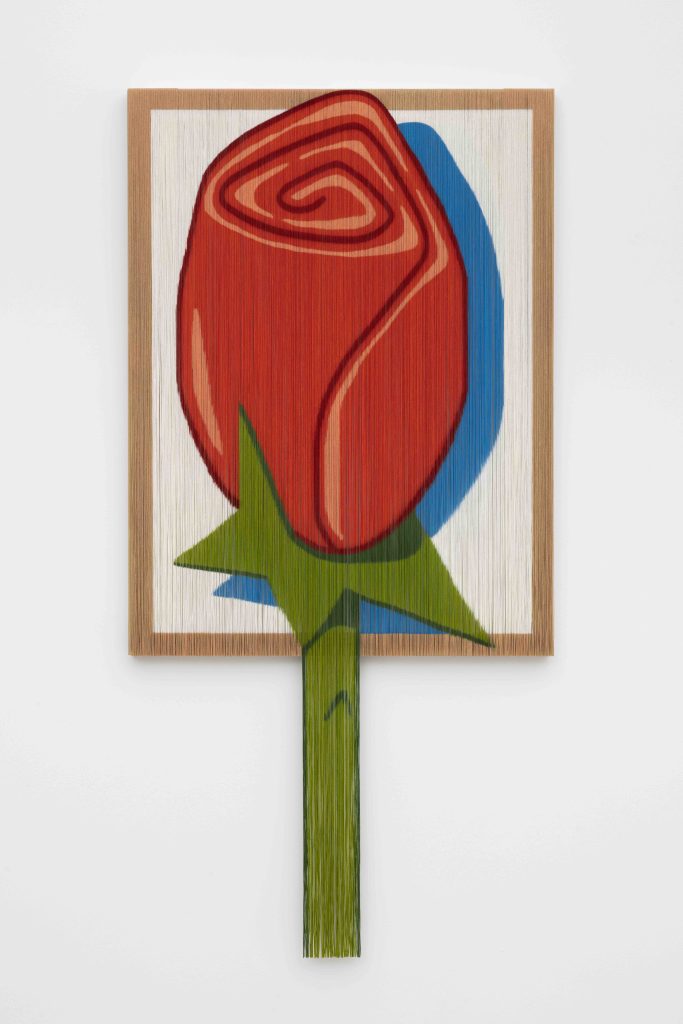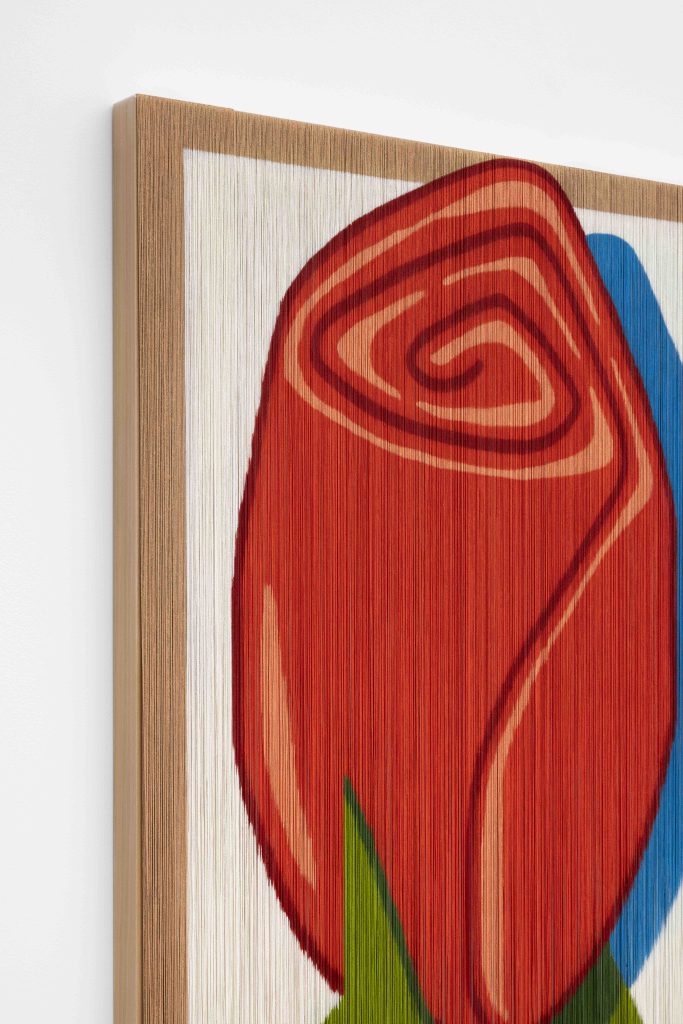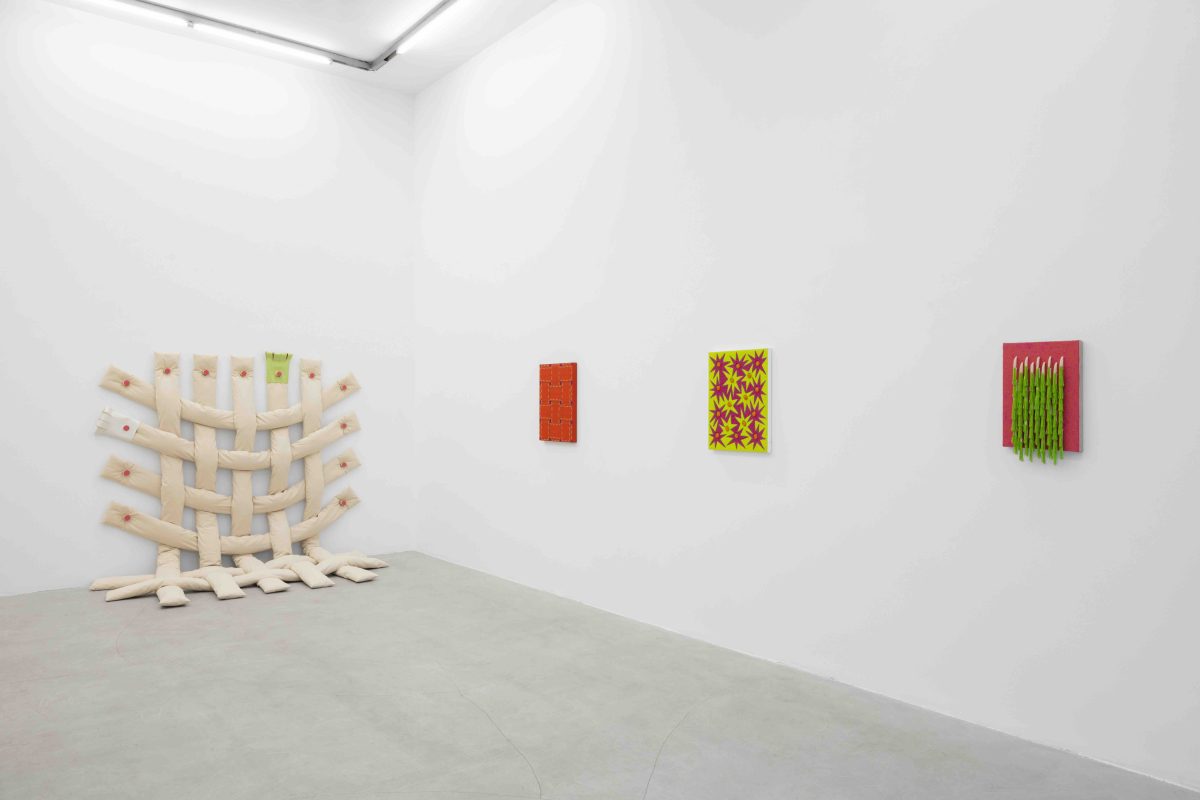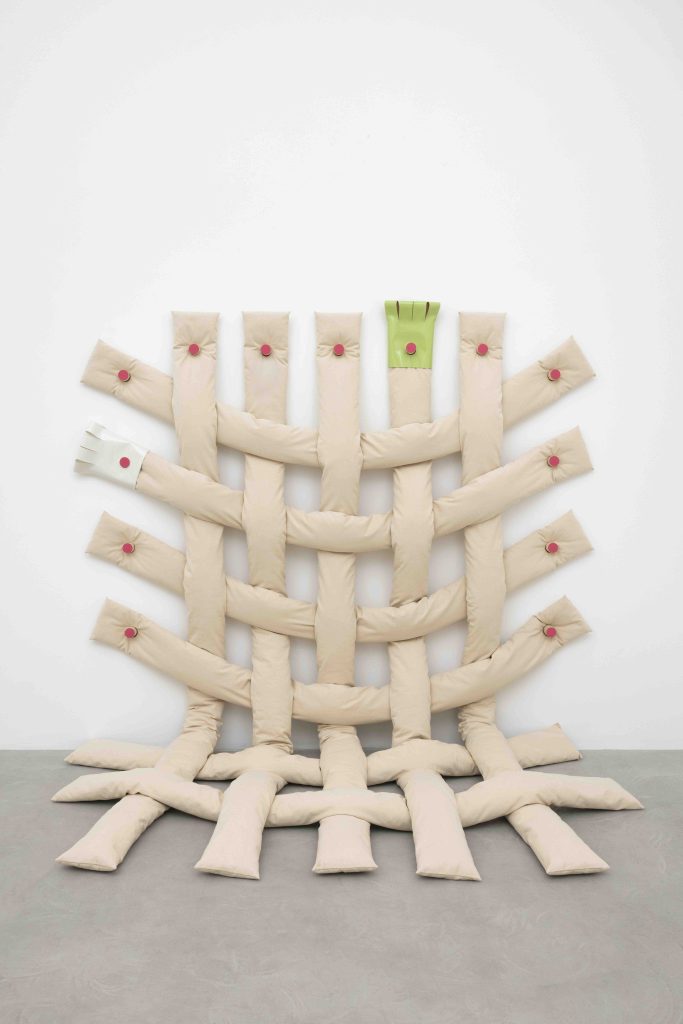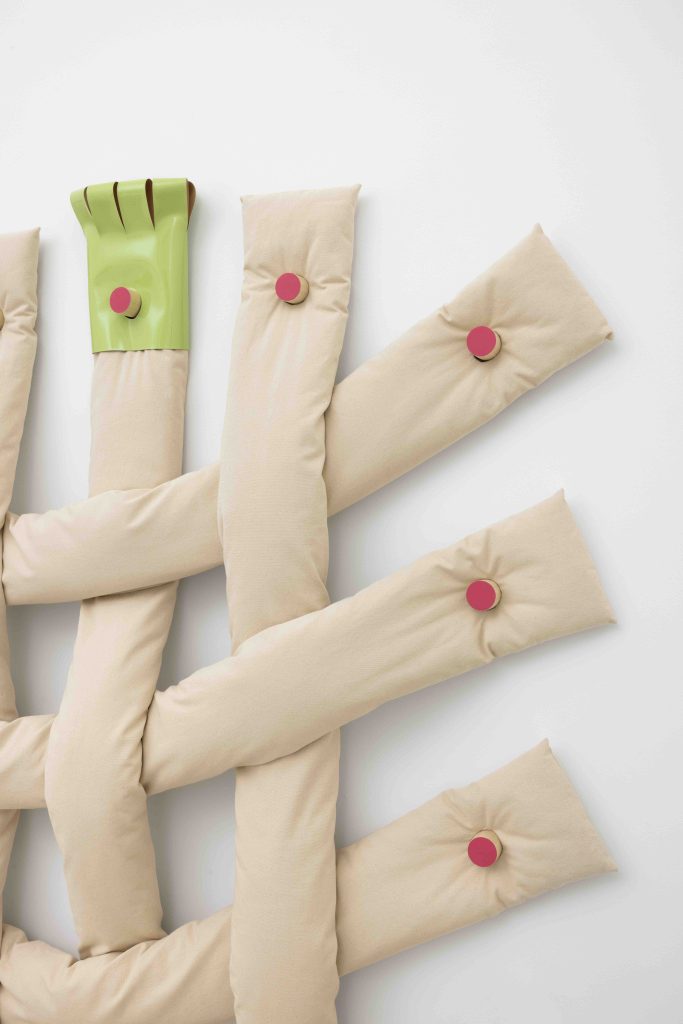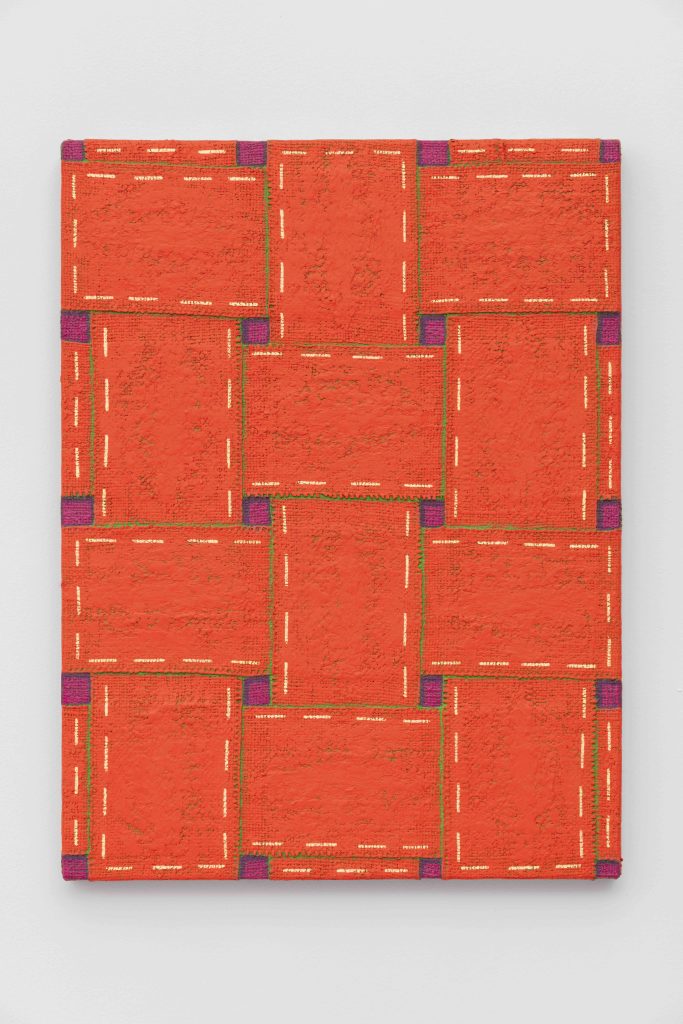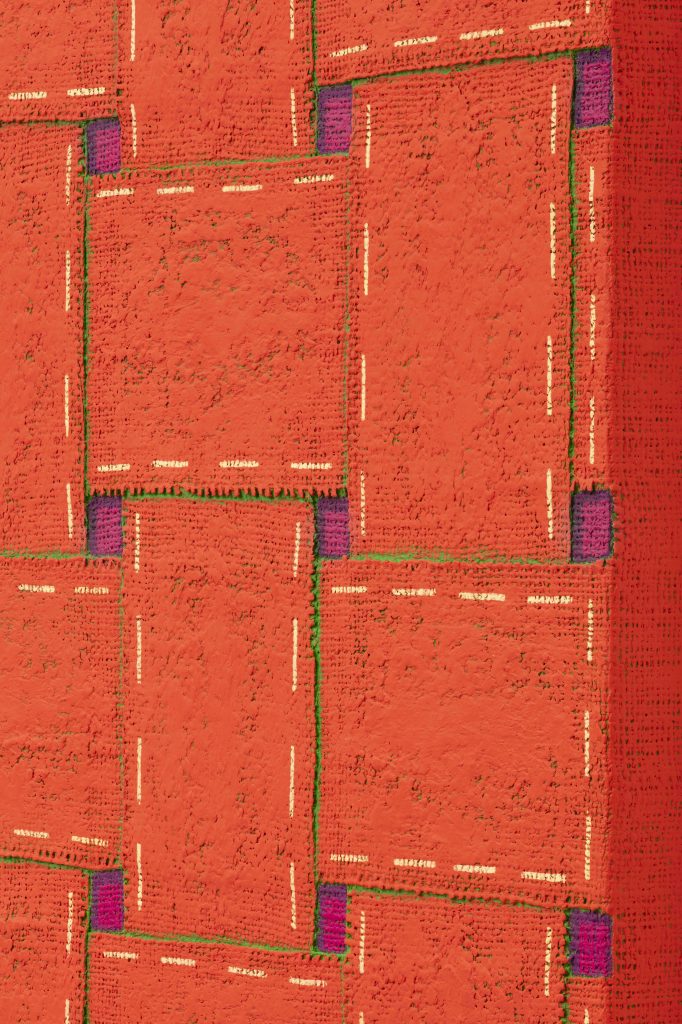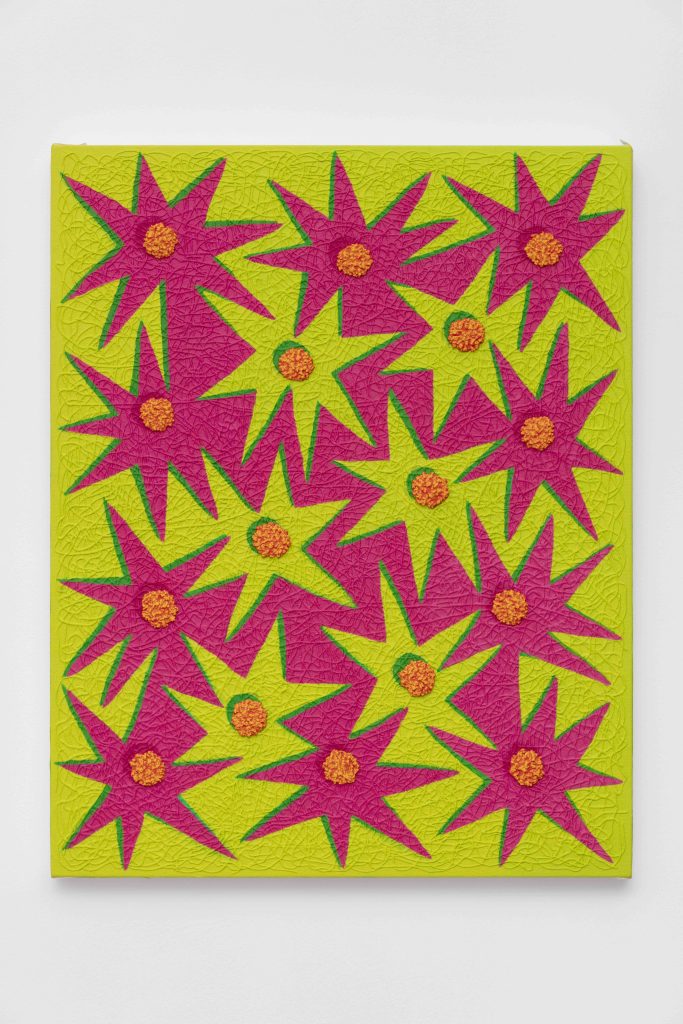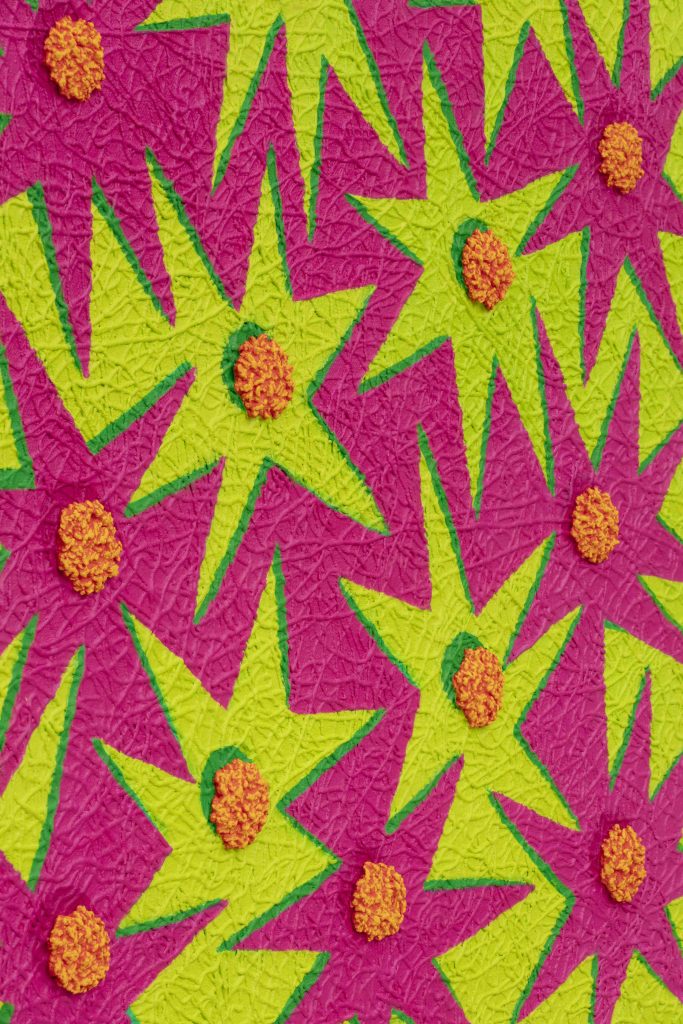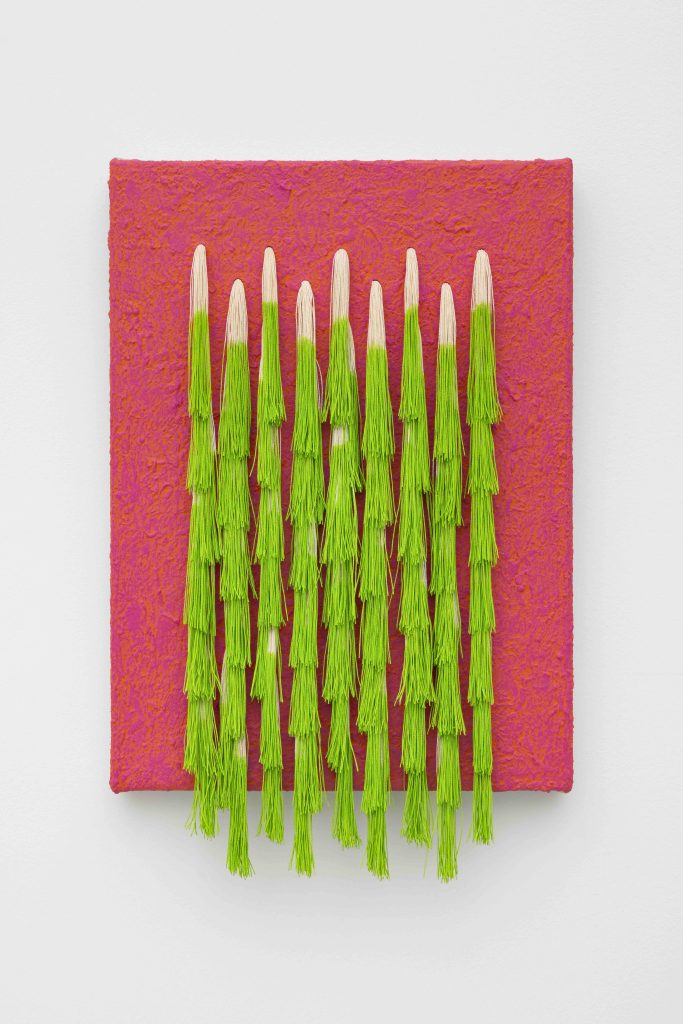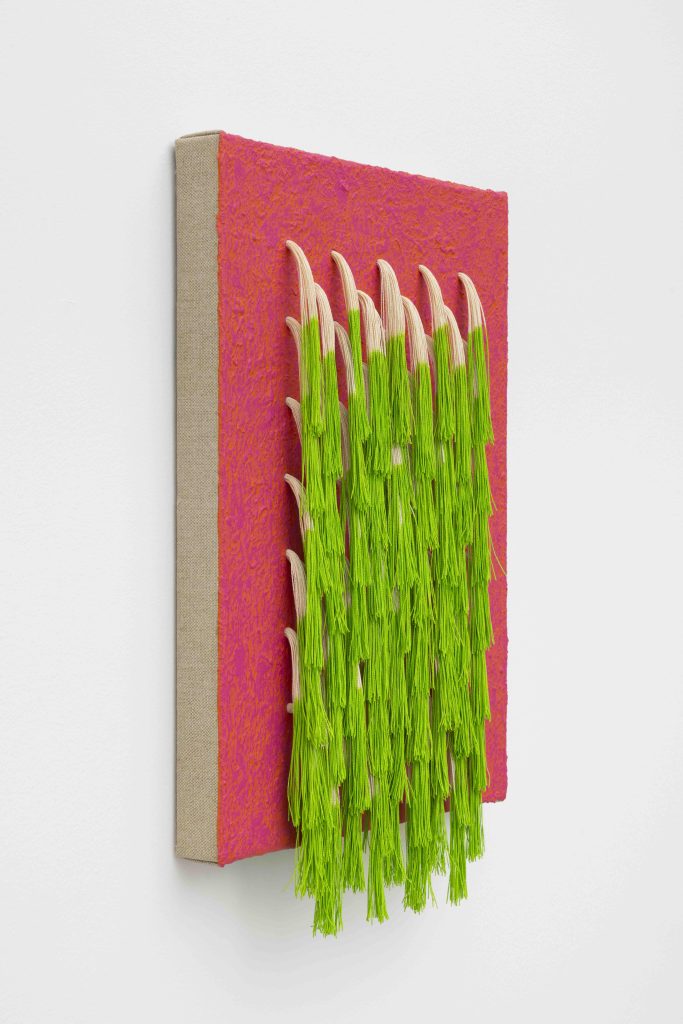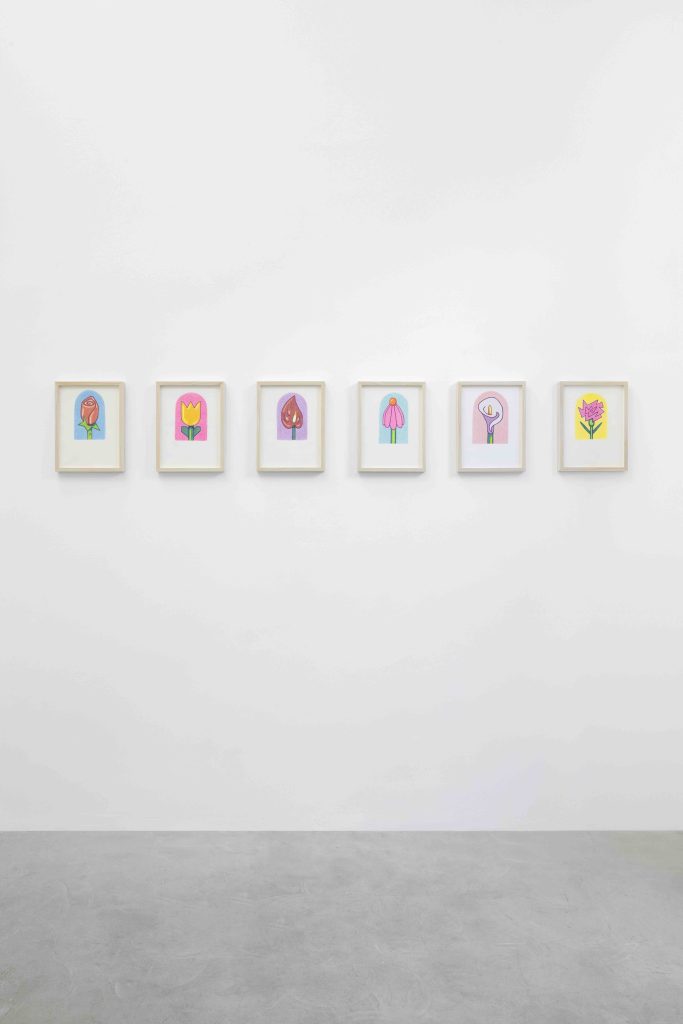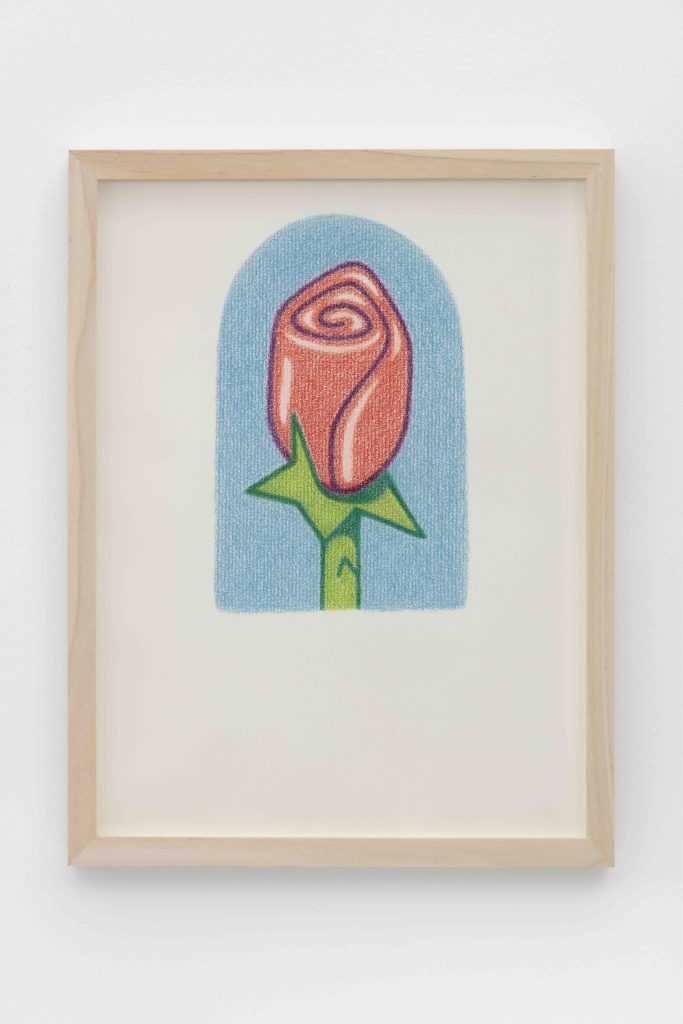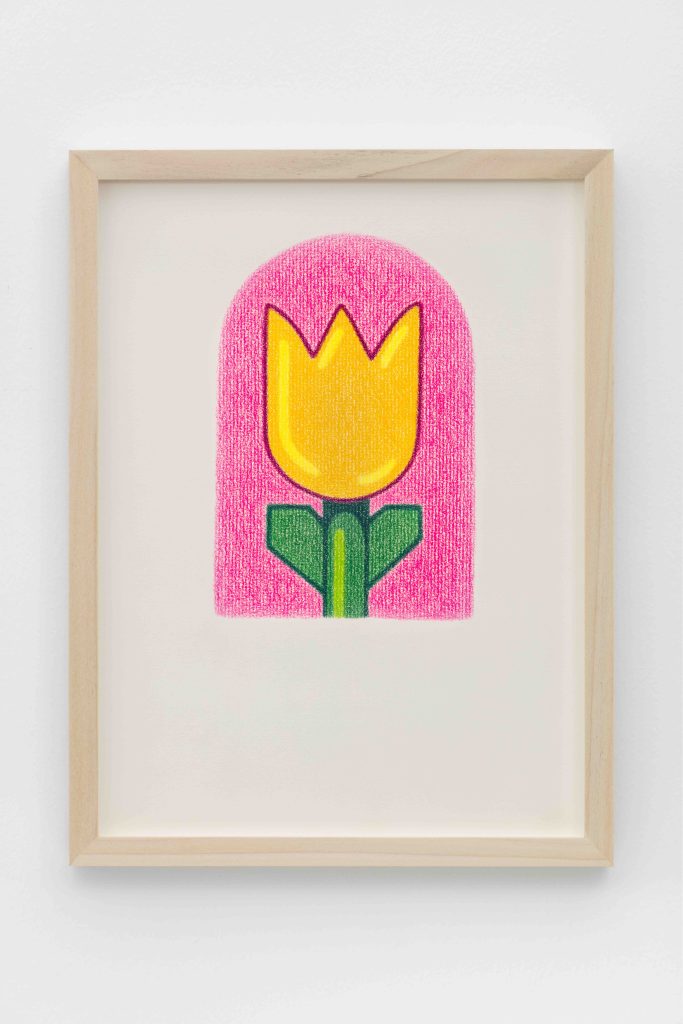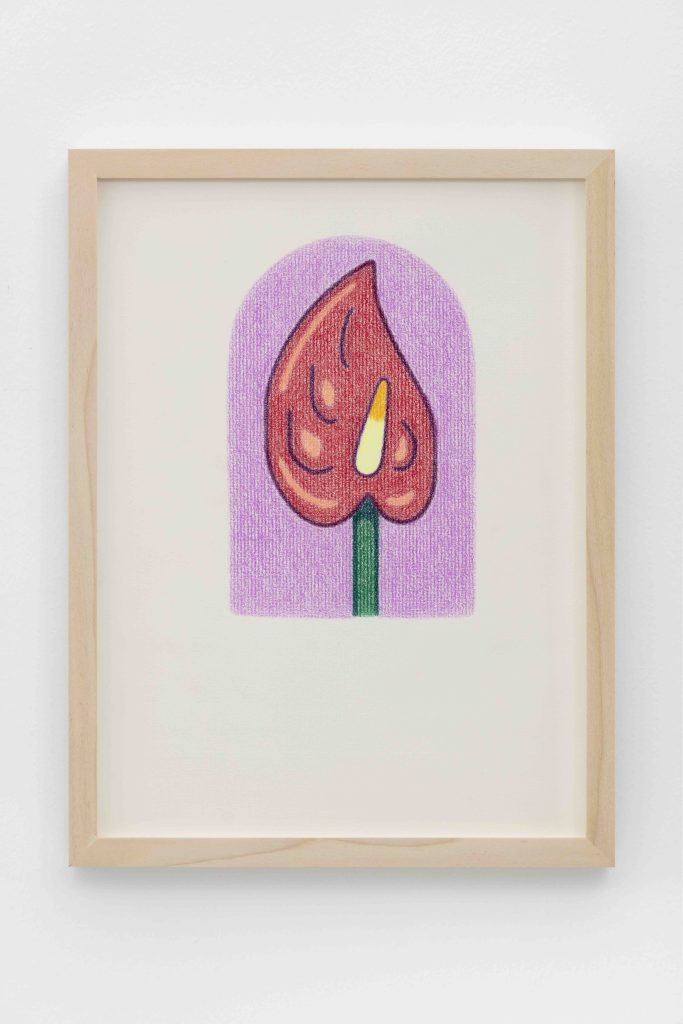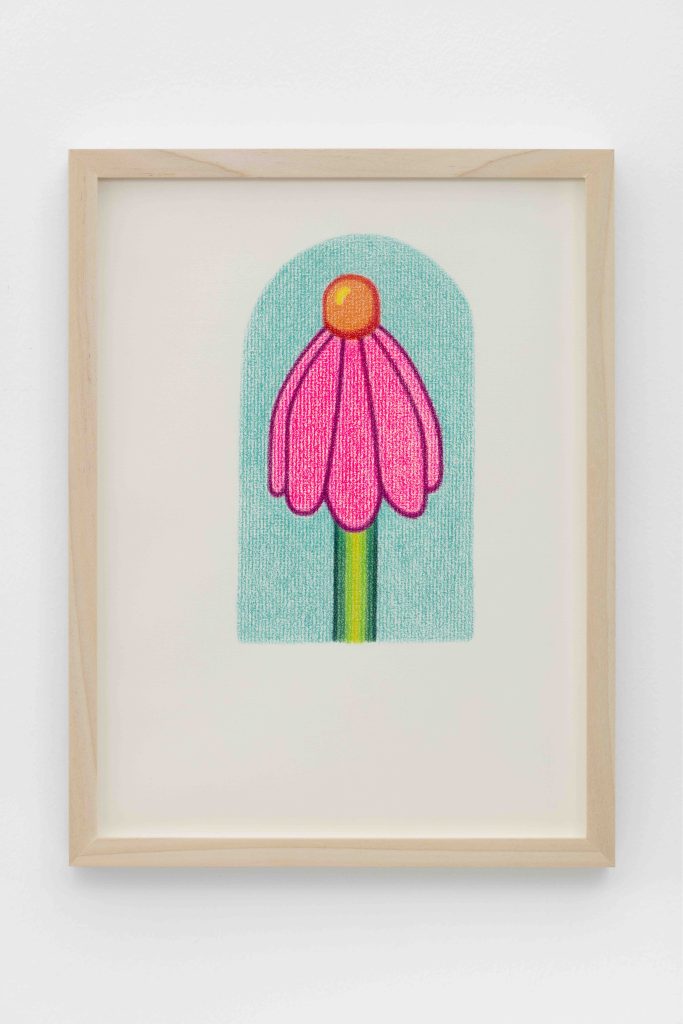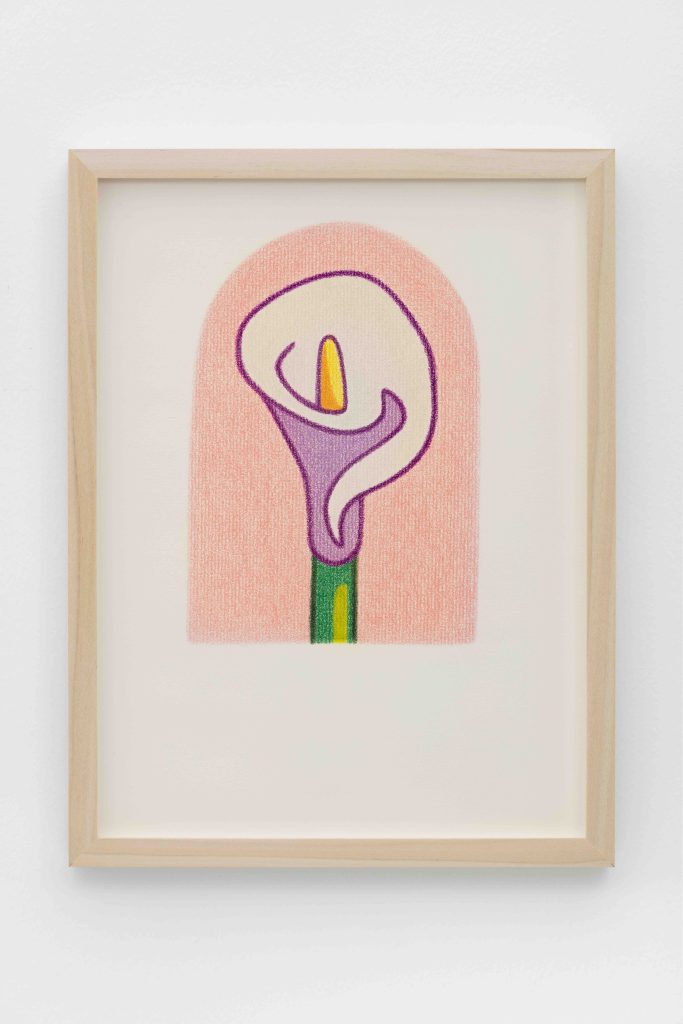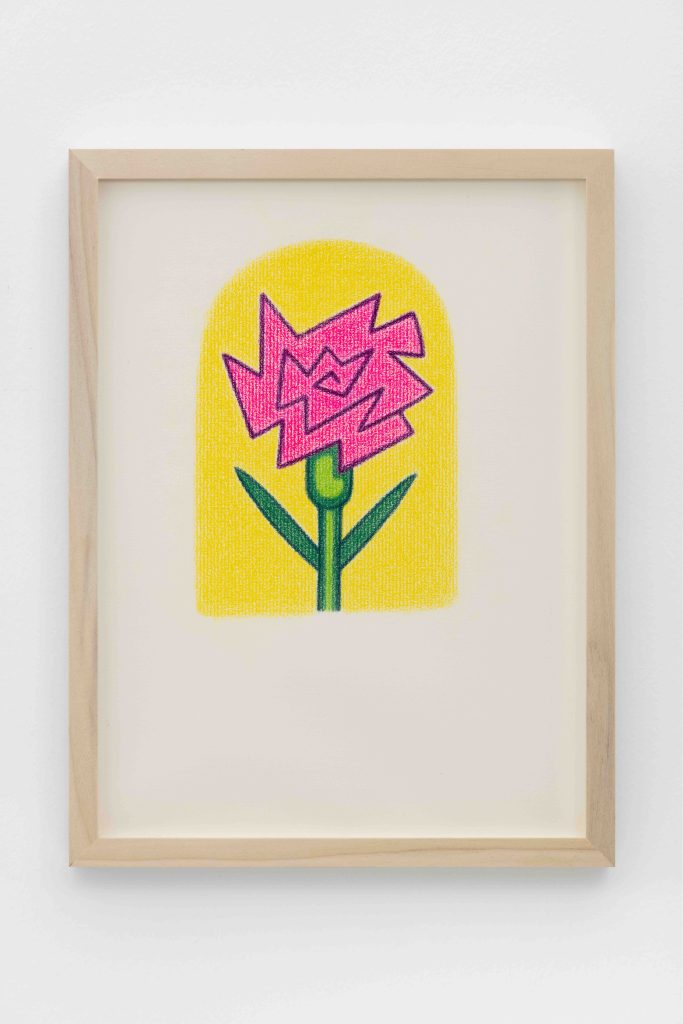
- This event has passed.
kaufmann repetto is happy to announce Dianna Molzan’s third solo show at the gallery, presenting new paintings, drawings, and sculptural objects. The title, Double Take, is key to the multi-layered viewing experience, triggered by the interplay of associations and reminiscences that link the works throughout the exhibition.
A playful déja vu effect underpins Molzan’s use of the twin spaces of the Milanese gallery, by using the two central, symmetrical rooms as an echoing premise, one room resembling the spatial configuration and art placement of the other without being identical.
Though flowers and floral patterns are a repeating motif in the artist’s practice, these particular forms, rendered as simple generic archetypes, are the latest works that focus on familiar and cultural enduring objects, a theme already explored in her previous series of individual vanity mirrors and doors. The compositions are nearly cartoonish, with bold outlined color, while the unstable ground for the meticulously executed paintings is an intricate surface of hanging threads, that are able to undulate in response to sudden movements of the viewer in close proximity, gently animating the flower.
The stretcher bars are included as minimal conceived trompe l’oeil framing device, and what is underneath is made overt, the rendering and real merging through the gaps in the string surface. The flower shapes float in front of the “empty” rectangle space, their stems spilling out of the pictorial space towards the ground. The classical categories of painterly investigation such as figure/ground, positive/negative undergo a strange twist in these works, who are quintessentially hybrids, both on an imaginative and material level.
This scrutiny is perpetuated in a group of small-sized drawings which resume the same flower motifs of the string paintings, as if the artist wanted to offer a way to grasp them as solid compositions, after the difficult task of capturing them on the moveable strands of thread.
The other smaller abstract works in the show merge fictional and factual elements, painted compositions seem to hang from real pegs; woven and collaged textured surfaces cast real and artificial made shadows. One of the paintings is accompanied by its doppelgänger that has become a sculptural wall installation. Elsewhere two works of the same small size can be described as having textured colored surface (one with an orange, the other with a blue base) with tufts of thread coming out of holes (differentiated by length, circumference, and number), hence generating distinct impressions. This variation on type from one room to the other is also seen in the large woven works on the two back walls that have the same dimensions, but different personalities.
Treating painting as installation objects that respond to their environment is fundamental to Molzan’s approach to exhibition, and in Double Take she has extended this focus by introducing large, bodily plush grids that function as geometric abstraction starting on the wall and spilling onto the floor to become a soft seating arrangement. These can be modified, extended, and multiplied according to location and continue the blurring of categories in keeping with her other works. With these unexpectedly large and sensuous installations, the artist consolidates her interest to challenge the dichotomy of painting versus sculpture, and her favoring of ‘thingness’ over imagery.
kaufmann repetto è lieta di annunciare la terza personale di Dianna Molzan con la galleria, in cui presenta nuovi dipinti, disegni e installazioni scultoree. Il titolo, Double Take, è la chiave di lettura dell’esperienza visiva da vari punti di vista. L’impressione di una ‘reazione a scoppio ritardato’ viene innescata dall’interazione tra associazioni e reminiscenze che collegano i lavori in mostra.
Un giocoso effetto déja vu sorregge l’impiego degli spazi gemelli della galleria milanese da parte di Molzan, con le due sale centrali e simmetriche usate come presupposto riecheggiante: una stanza che assomiglia all’altra nella configurazione spaziale e nella collocazione artistica senza esserne identica.
Sebbene fiori e motivi floreali siano un motivo ricorrente nella pratica dell’artista, queste forme particolari, rese come archetipi quasi generici, sono le opere più recenti che si concentrano su oggetti familiari e culturali, un tema già esplorato nelle precedenti serie di specchietti per il trucco e porte individuali. Le composizioni sono quasi fumettistiche, con colori audaci, mentre la base instabile per i dipinti meticolosamente eseguiti è una intricata superficie di fili appesi, liberi di ondulare e animando delicatamente il fiore in reazione a movimenti improvvisi dello spettatore nelle immediate vicinanze.
Le barre del telaio vengono rappresentate come cornice trompe l’oeil minimale, e nella parte sottostante la realtà retrostante è resa palese attraverso gli spazi vuoti nella superficie dei fili. Le forme dei fiori fluttuano davanti allo spazio rettangolare “vuoto” con gli steli che fuoriescono dallo spazio pittorico verso terra. Le categorie dell’indagine pittorica quale figura/sfondo subiscono una strana torsione di fronte a queste opere, che sono ibride per eccellenza sia sul piano dell’immagine che del materiale.
Questa analisi è ripresa in un gruppo di disegni di piccole dimensioni che ripetono gli stessi motivi floreali dei dipinti, come se l’artista volesse offrire un modo per coglierli come composizioni solide, dopo il difficile compito di catturarli su sezioni mobili di filo.
Le altre opere della mostra, più piccole e astratte, fondono elementi fittizi e concreti: composizioni dipinte che sembrano appese a pioli reali; superfici tessute e realizzate a collage proiettano ombre reali e artificiali. Uno dei dipinti è accompagnato dal suo doppelgänger che è diventato un’installazione scultorea a parete. Due opere delle stesse piccole dimensioni sembrano simili, entrambe con una superficie tramata e colorata (una con base arancione, l’altra con base blu) con ciuffi di filo che escono da fori (ma di lunghezza, circonferenza e quantità diverse), generando così impressioni distinte. Questa variazione di tipologia da una stanza all’altra è osservabile anche nelle grandi opere intessute sulle due pareti di fondo che hanno le stesse dimensioni, ma personalità diverse.
Trattare i quadri come oggetti di installazione in dialogo con il loro ambiente è un aspetto fondamentale dell’approccio espositivo di Molzan, e in Double Take ha esteso questo focus introducendo grandi e corposi reti che fungono da astrazione geometrica che inizia sul muro per riversarsi sul pavimento e diventare una morbida seduta; possono essere modificate, estese e moltiplicate in base alla posizione e reiterano la confusione delle categorie in linea con le altre opere. Con queste installazioni inaspettatamente grandi e sensuali, l’artista intensifica il proprio interesse verso la messa in discussione della dicotomia tra pittura e scultura, e la propria preferenza della ‘coseità’ rispetto all’immagine.

